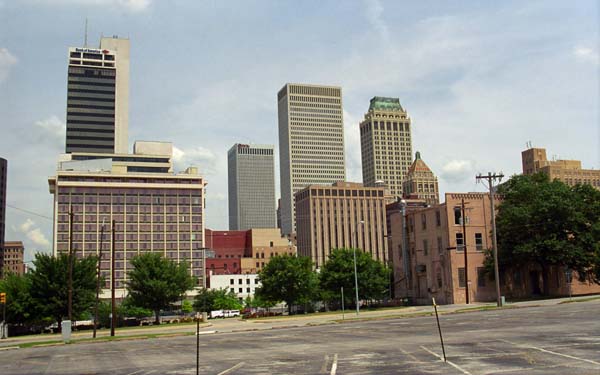With a population close to 400,000, and a modest but respectable skyline, I rank Tulsa as one of the "big city" stops on Route 66, along with Chicago, St. Louis, Oklahoma City, Albuquerque, and Los Angeles. Cyrus Avery, the "Father of Route 66," was from Tulsa, so here is where it all began. Mr. Avery owned a gas station, a restaurant, and a tourist court in Tulsa, went to Washington in 1925 to help establish the Federal Highway System, which included Route 66, then ran the new road right by his businesses. What a country!
Tulsa was the "Oil Capital of the World" in the early part of the 20th century, and since Art Deco was "in" at the time, much of the local architecture reflects that style, right down to the churches. The Metro Diner, where Elvis ate, was built in the 1980's (and torn down, sorry to say, just a few years ago to make way for a University of Tulsa expansion), so it really wasn't authentic Route 66. But it sure looked the part, and hosted many 66 roadies during its time.
Here's some advice for the two-lane Route 66 traveler: Don't rely on a hotel's directions when it comes time to stop for the night. They will be tailored for the interstate traveler, not for you, something you don't want to discover after a long day on the Mother Road. I made that mistake in Tulsa, and got a lengthy, unscheduled after-dark look at a large portion of the city as I drove in circles looking for I-44. I had pulled into town on 11th Street at dusk, drove until I passed some of the bigger buildings uptown, yawned, then took my last pictures of the evening. That should have capped a great day on 66, except for the fact that Exit 229 means nothing to someone on 11th Street. Log Book: 733 miles motored on old 66.




No comments:
Post a Comment